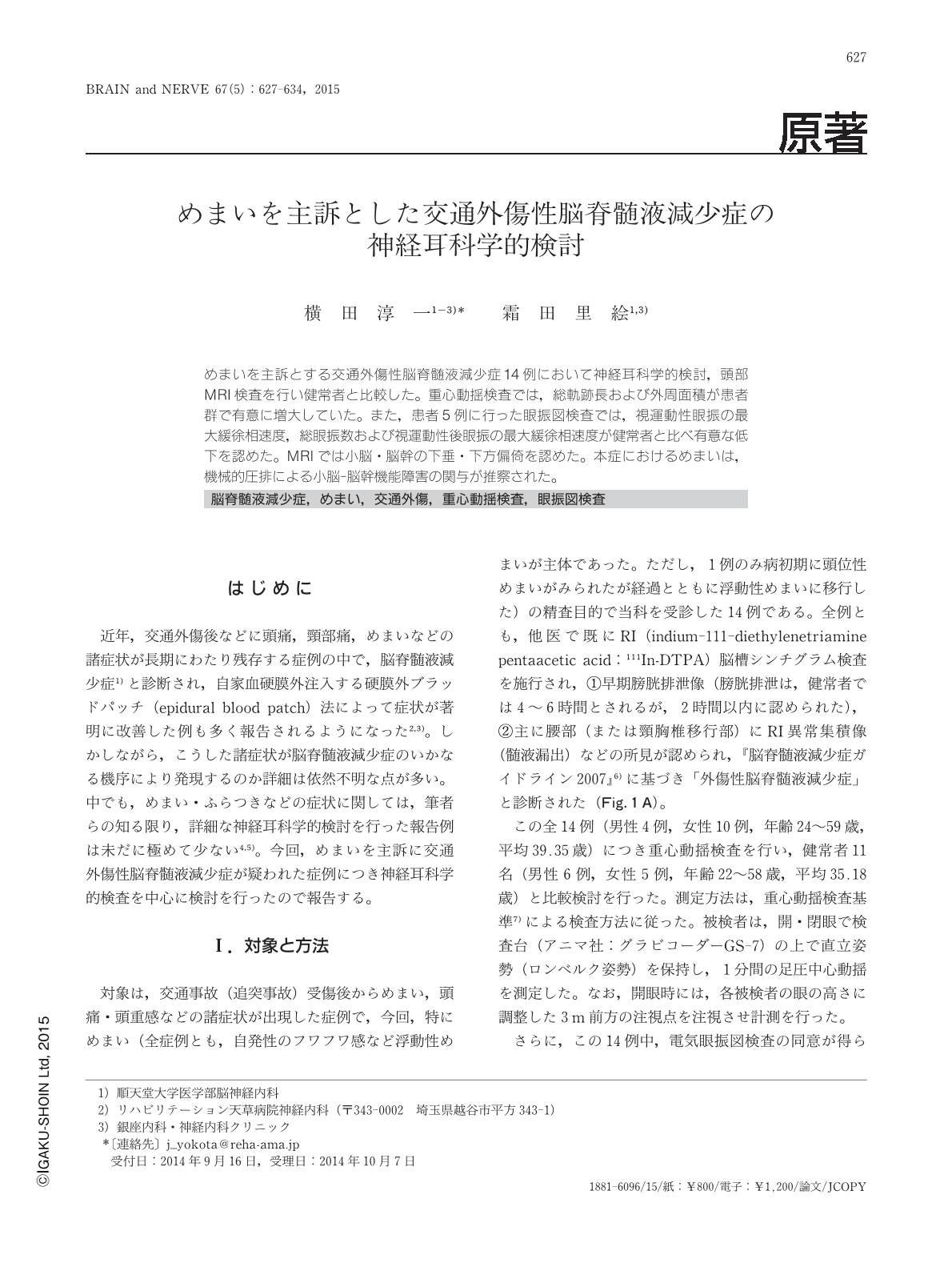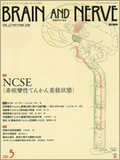Japanese
English
- 有料閲覧
- Abstract 文献概要
- 1ページ目 Look Inside
- 参考文献 Reference
めまいを主訴とする交通外傷性脳脊髄液減少症14例において神経耳科学的検討,頭部MRI検査を行い健常者と比較した。重心動揺検査では,総軌跡長および外周面積が患者群で有意に増大していた。また,患者5例に行った眼振図検査では,視運動性眼振の最大緩徐相速度,総眼振数および視運動性後眼振の最大緩徐相速度が健常者と比べ有意な低下を認めた。MRIでは小脳・脳幹の下垂・下方偏倚を認めた。本症におけるめまいは,機械的圧排による小脳-脳幹機能障害の関与が推察された。
Abstract
Vertigo and dizziness are common clinical manifestations after traffic accident-associated whiplash injury. Recently, Shinonaga et al. (2001) suggested that more than 80% of patients with whiplash injury complaining of these symptoms showed cerebrospinal (CSF) hypovolemia on radioisotope (RI) cisternography (111In-DTPA). However, neuro-otological studies to investigate the pathophysiological mechanisms underlying these symptoms have been insufficient.
In the present study, patients complaining of these symptoms with CSF hypovolemia after traffic accidents were investigated with posturography and electronystagmography (ENG). Fourteen patients (4 men, 10 women; 24-52 yr) were examined with posturography and showed parameters (tracking distance & area) significantly (p<0.01) larger than those of healthy subjects. Among them, five cases (1 man, 4 women; 31-52 yr) were further investigated with ENG. The slow phase peak velocities of optokinetic nystagmus (OKN) and optokinetic-after nystagmus (OKAN) were significantly (p<0.01) reduced (62.64±6.9 SD deg/sec, 60.76±10.74 SD deg/sec, respectively) and frequencies of OKN were reduced (139.7±10.75 SD), while the ocular smooth pursuit was relatively preserved.
Magnetic resonance images (sagittal view) of these five patients demonstrated the downward displacement of the cerebellar tonsils and flattening of the pons, which are characteristic features of CSF hypovolemia, called "brain sagging."
Our results suggest that brain sagging due to CSF hypovolemia impairs vestibular and vestibulocerebellar functions, which may cause dizziness and vertigo.
(Received September 16, 2014; Accepted October 7, 2014; Published April 1 2015)

Copyright © 2015, Igaku-Shoin Ltd. All rights reserved.


